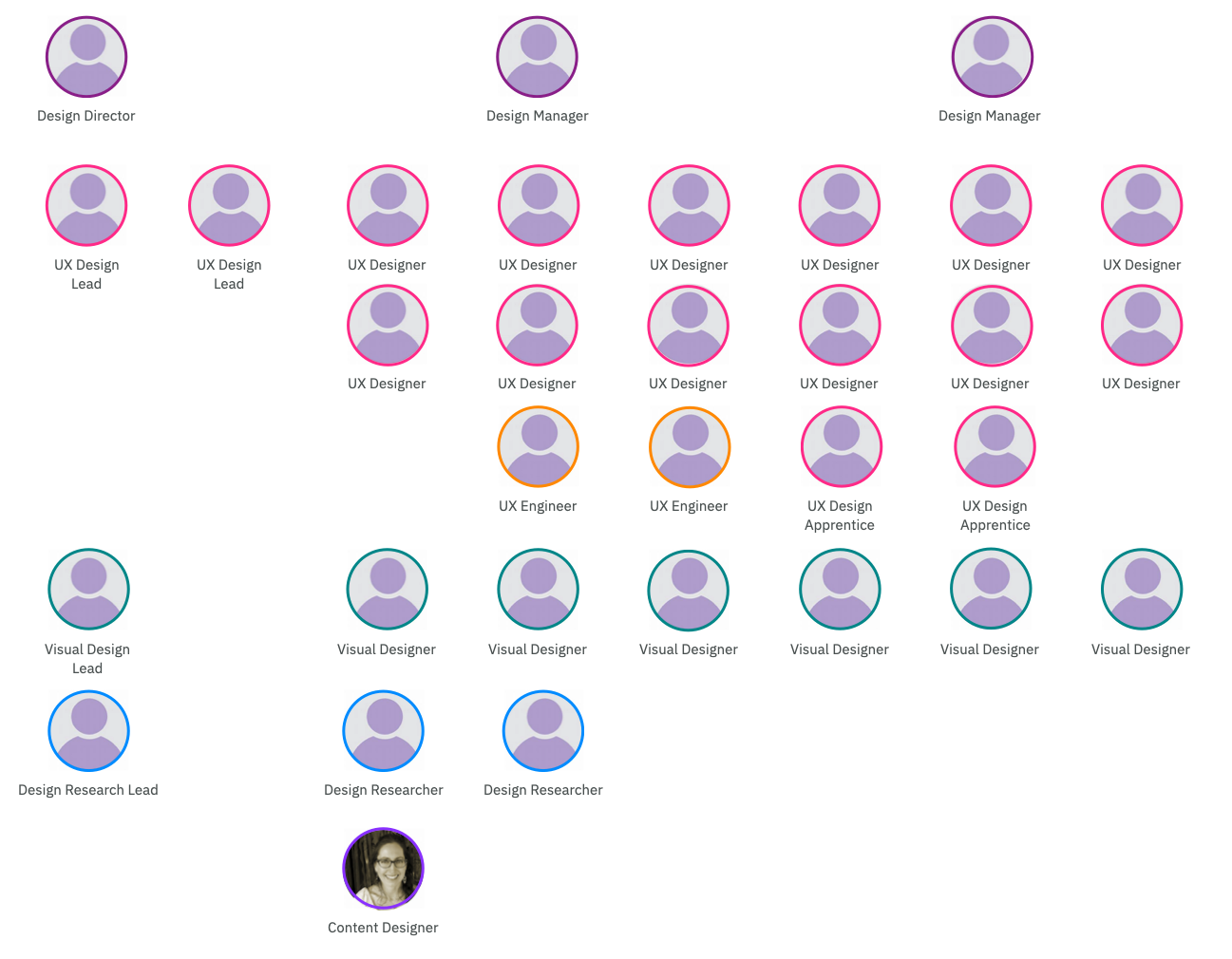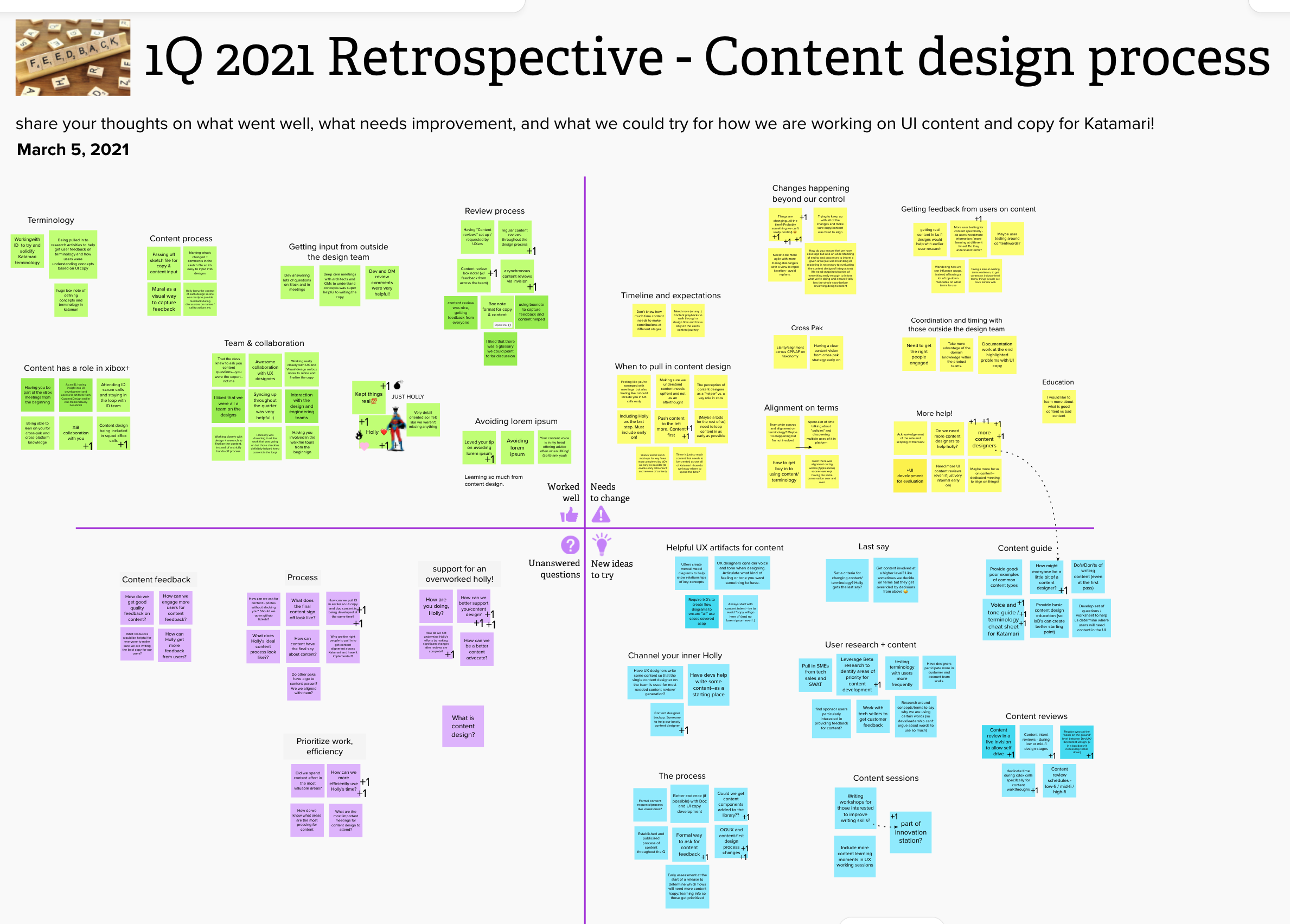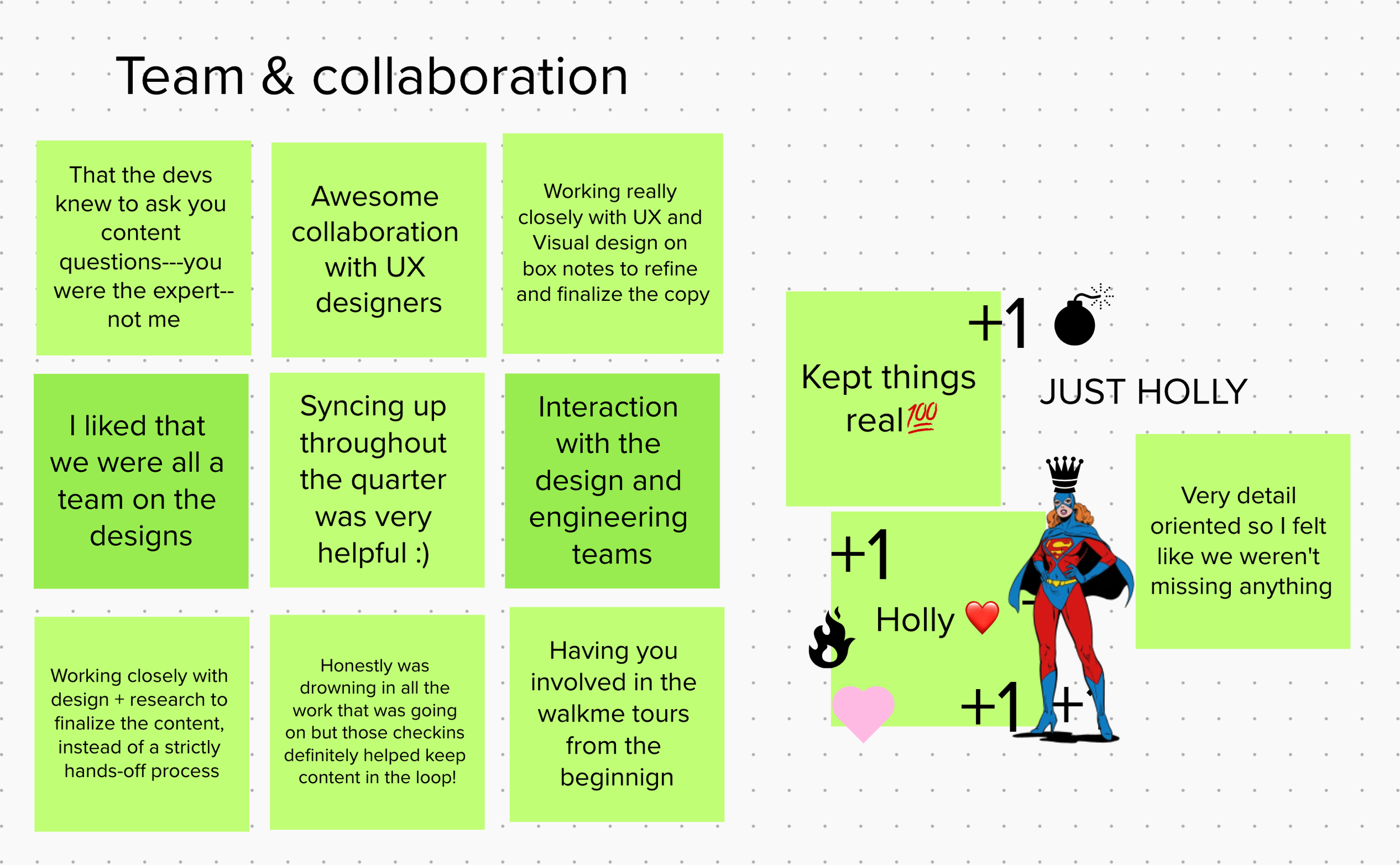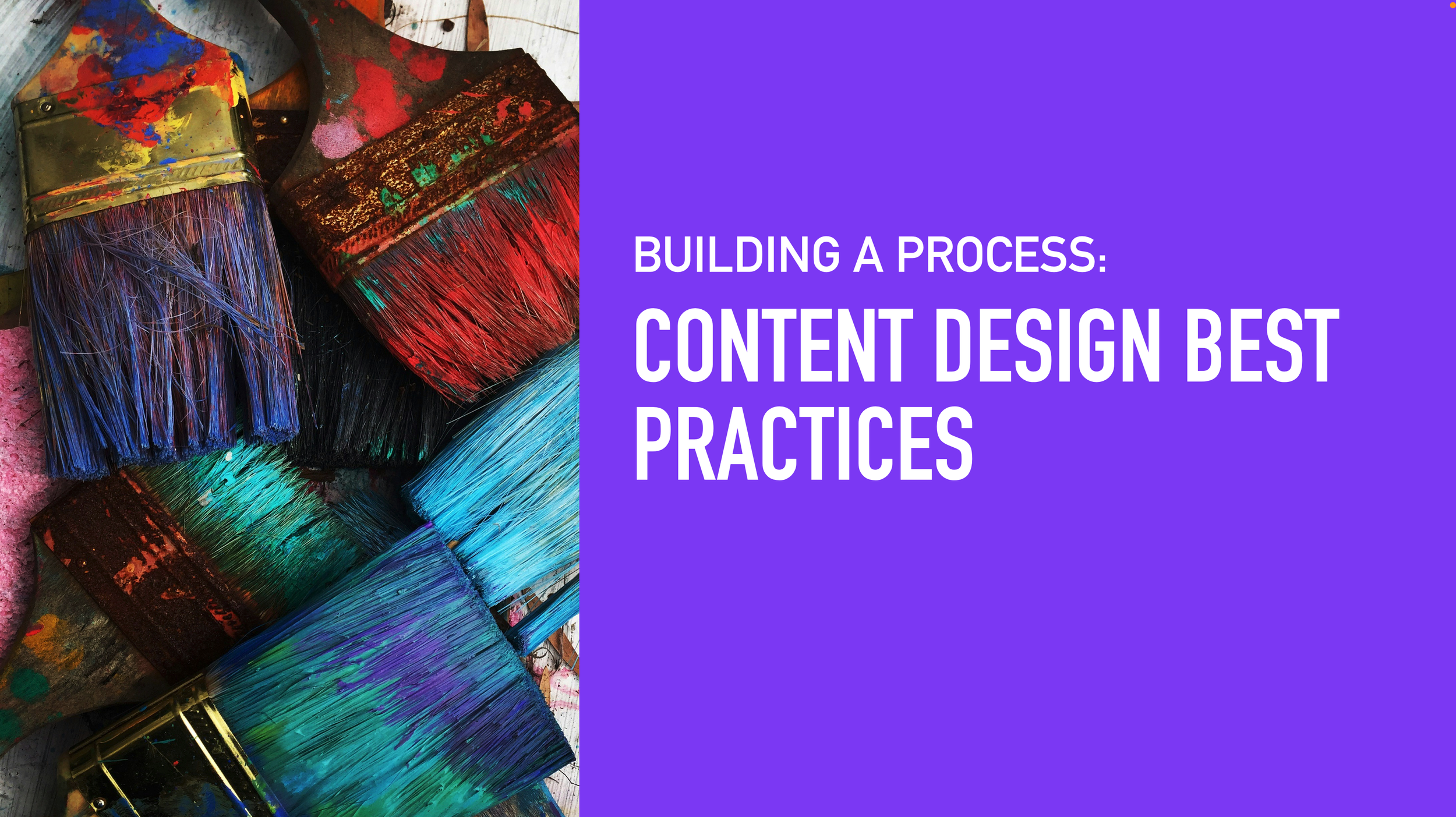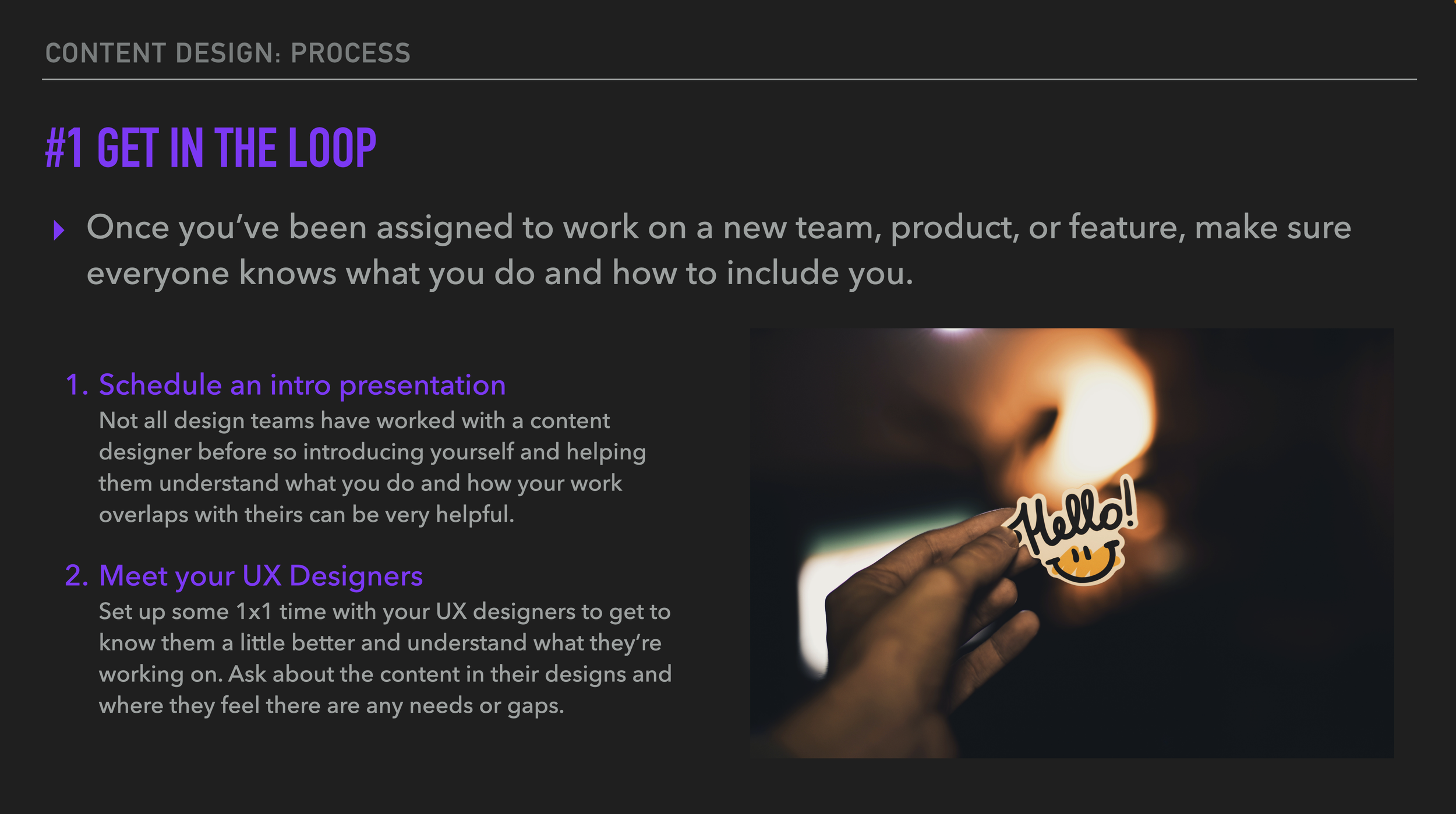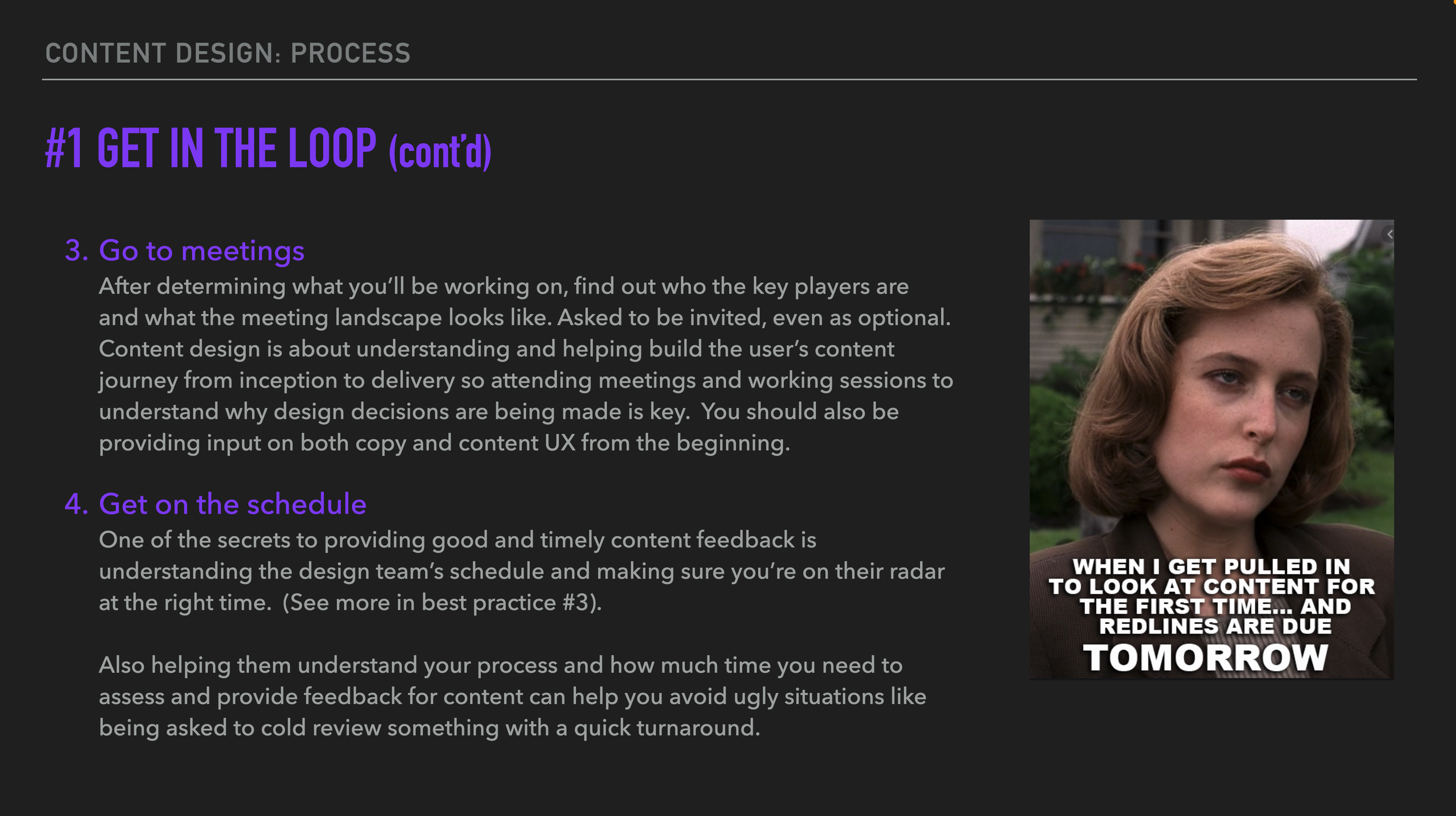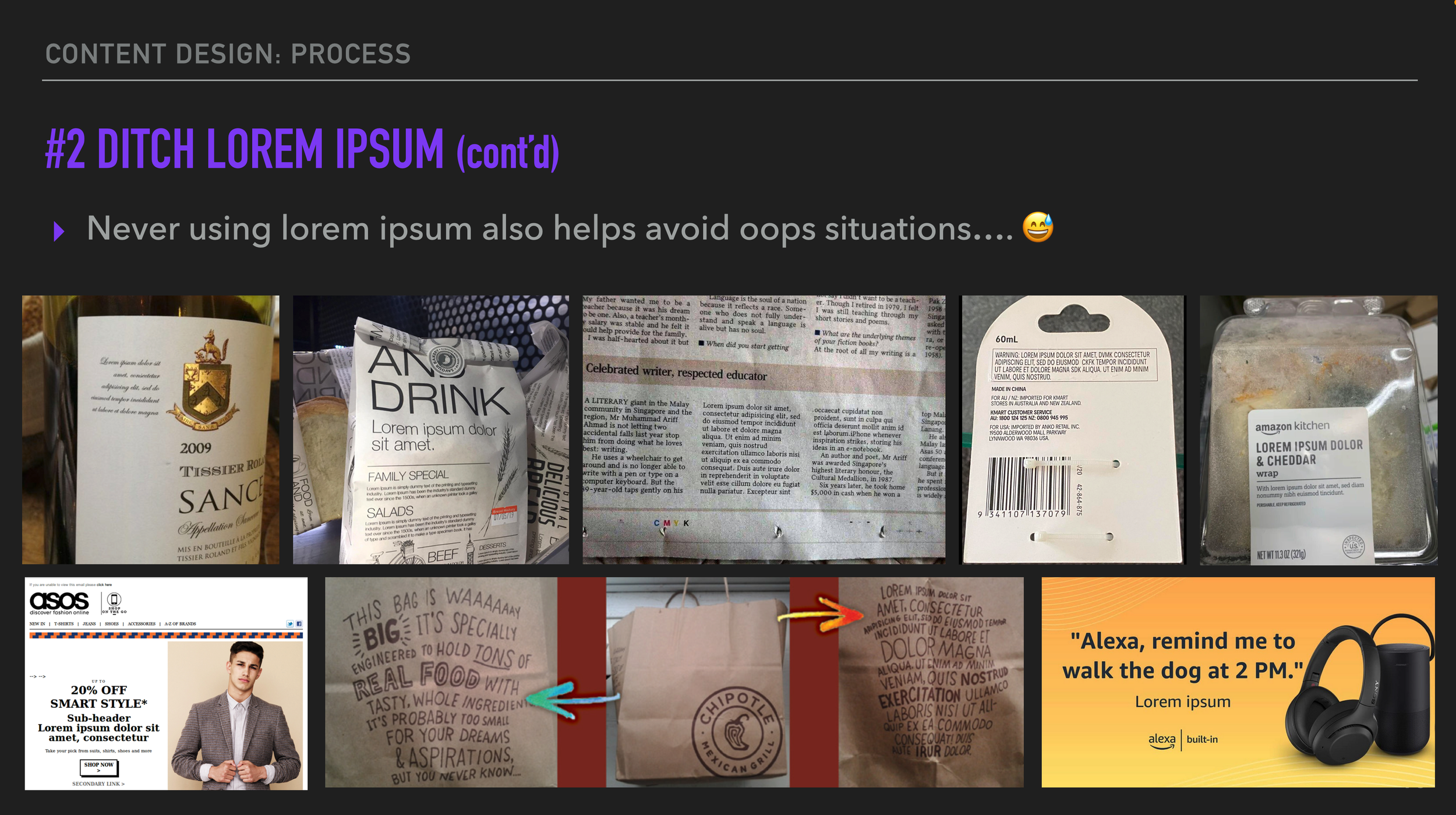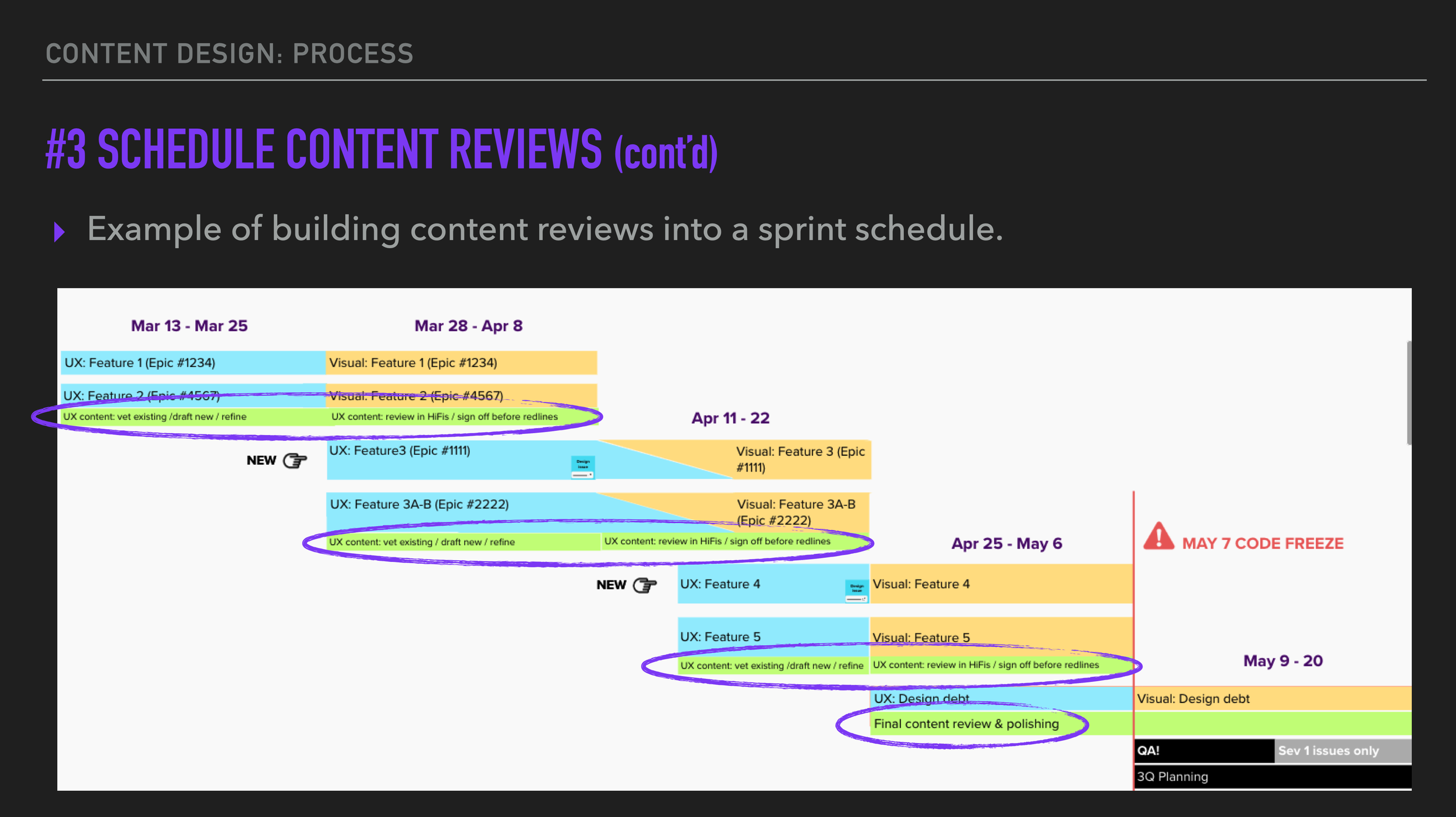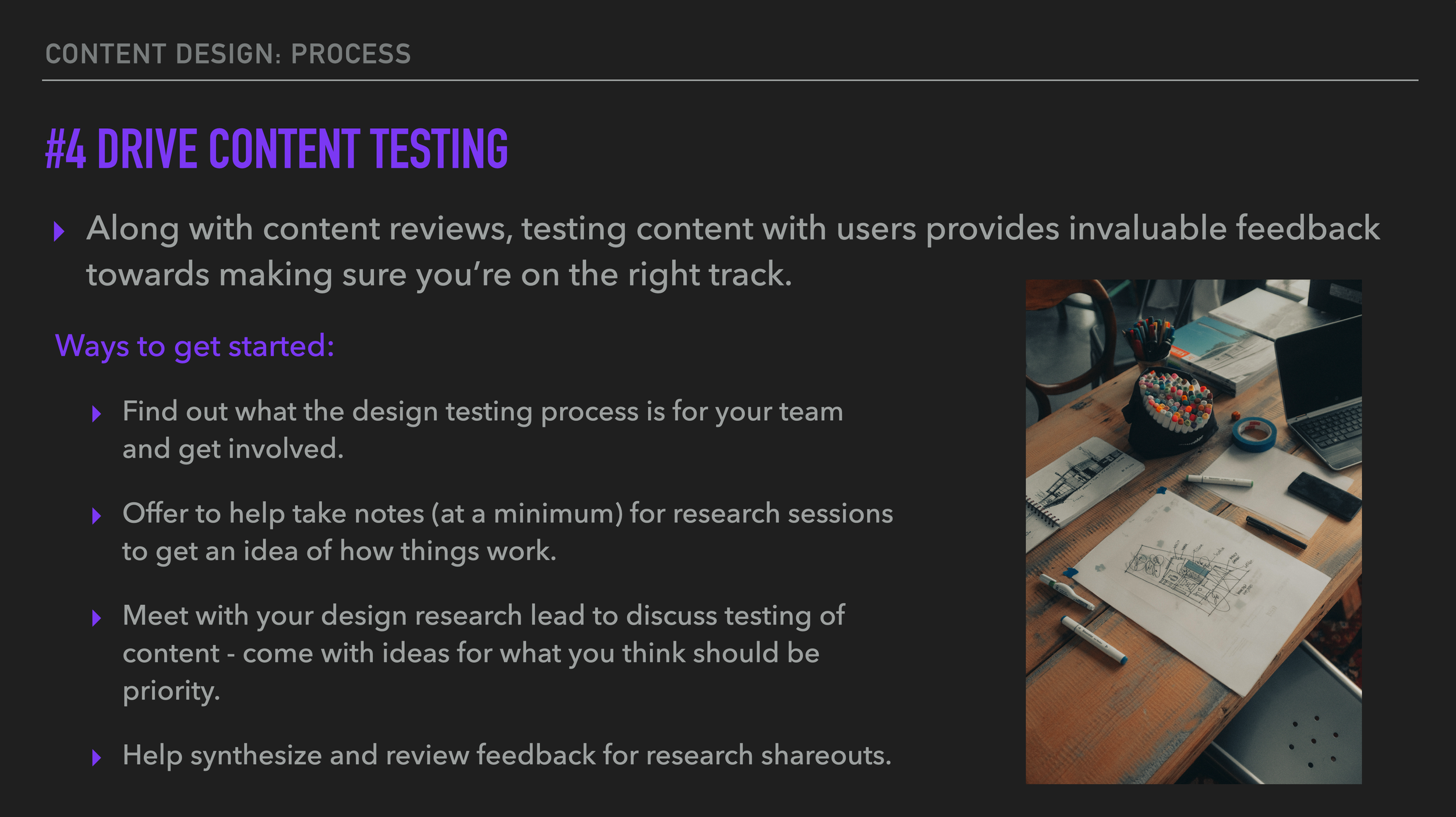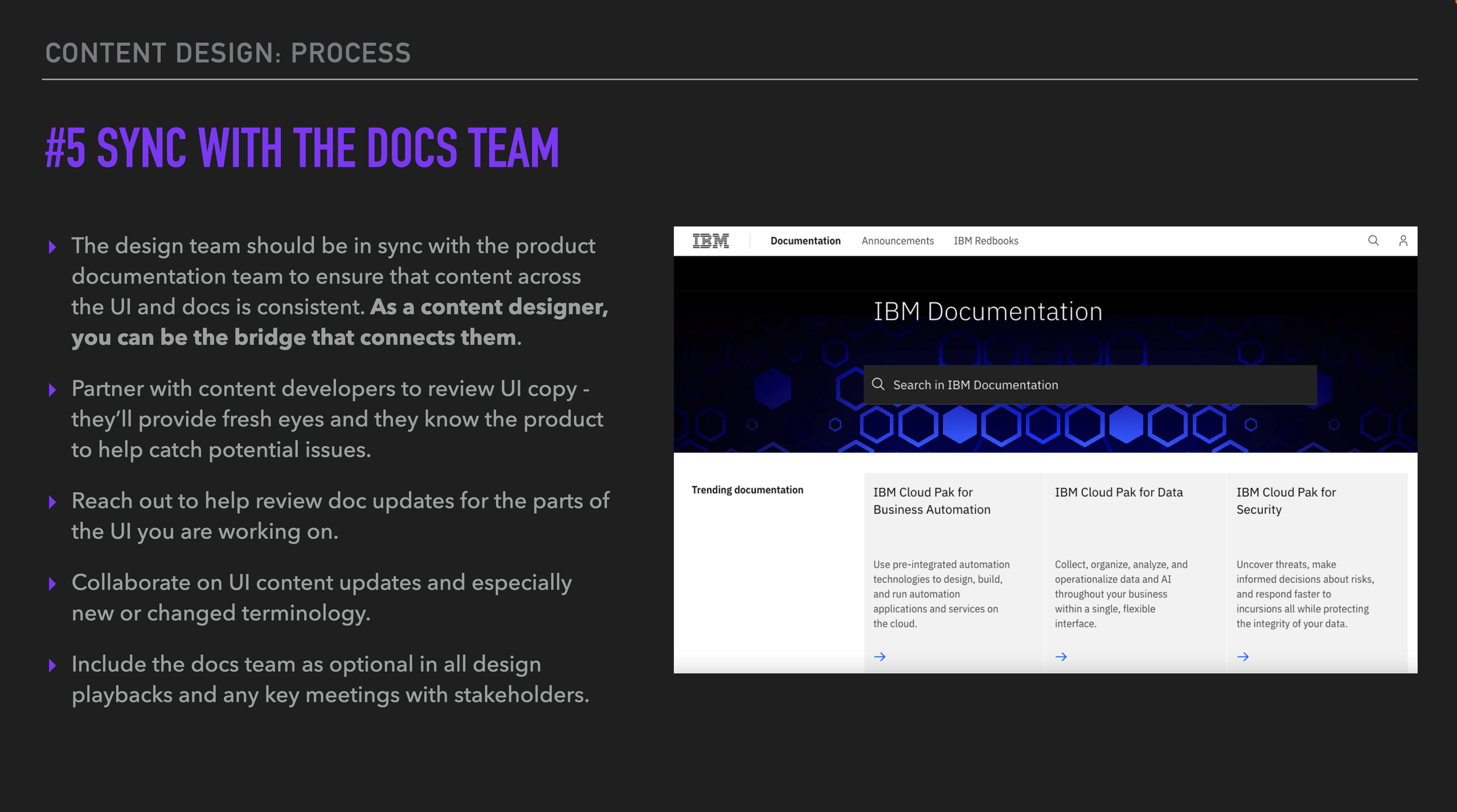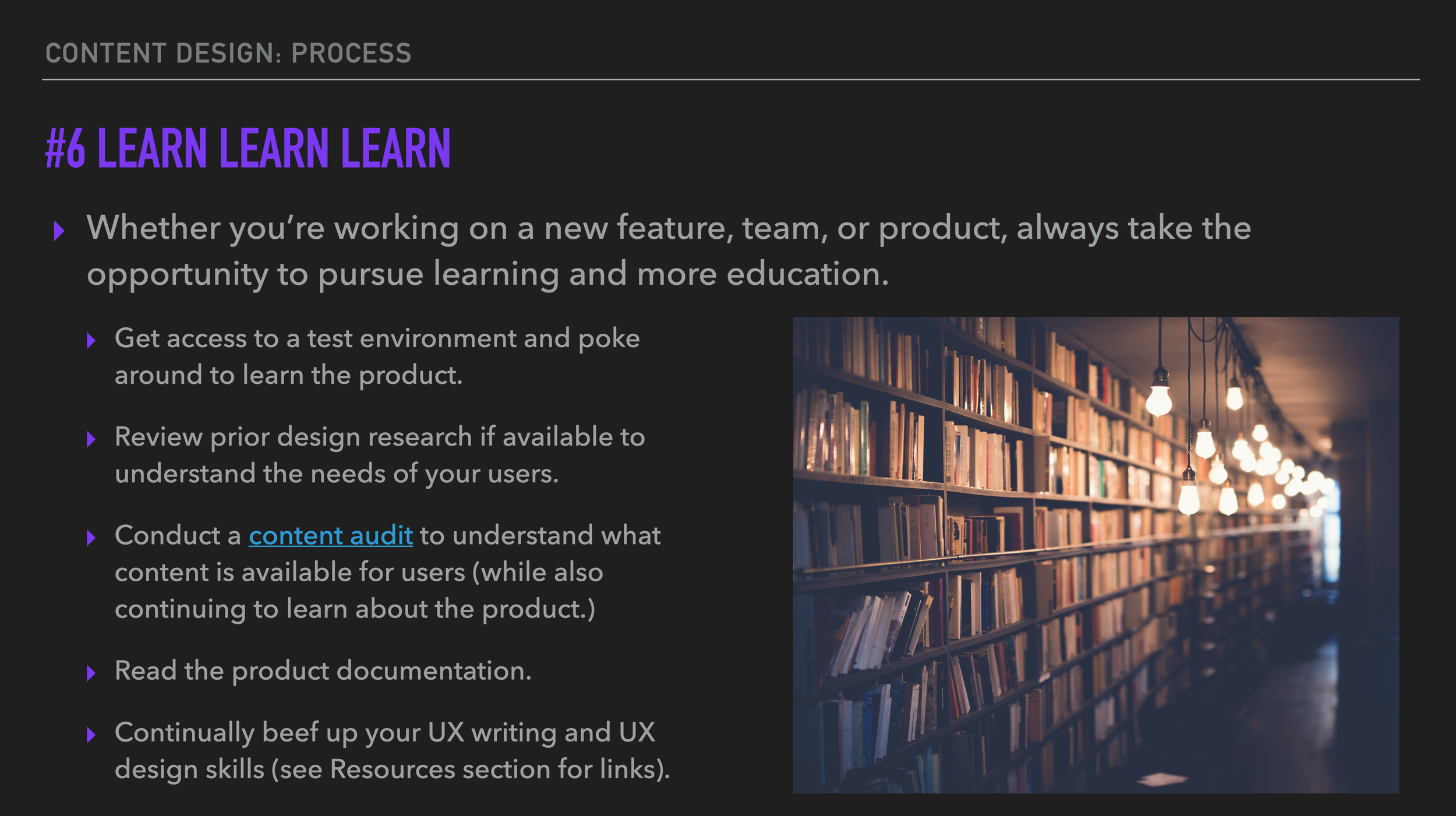Content designing on a large team
Summary
After the UX content designer pilot program was a success on Transformation Advisor and we brought another content designer onboard, I moved to a fairly small team with an ideal ratio of designers (a UX lead, UX apprentice, design researcher, visual designer, and me) for a special project. After a year, the effort was unfortunately shelved, so I moved again to the newly forming Cloud Pak for AIOps team and it was a whole different ballgame. I went from working with 2 UX designers to around 16. Figuring out how to provide meaningful UI content input while learning all areas of the product and trying to support each squad at the level I strove for was quite a challenge.
Problem
IBM Cloud Pak for AIOps is an AIOps platform was a new application-centric product focused on providing insights and intelligence across the the ITOps toolchain. It was a complex landscape with capabilities from two existing products being merged together with an injection of new functionality. Working to create a cohesive and consistent content experience while learning the product and trying to advocate for the content design role across a whole new group of designers was daunting.
Role
Lead (solo) UX content designer on Cloud Pak for AIOps regularly working with 12-15 product designers (UX, visual, research) across ~7 squads
Key contributions
Developed a workable process for collaboration with UX design leads to establish a content design cadence.
Attended high-level meetings and discussions to be involved as much as possible in early design development across the product.
Wrote, edited, and refined copy across the UI.
Ensured consistency in voice and tone and adherence to content guidelines for the product.
Elevated content for research planning and supported UX researchers during testing activities.
Worked across squads to establish and adopt patterns for in-product guidance. See details here.
Outcome
Over the 4 years that I worked on the Cloud Pak for AIOps team, I worked hard to address some higher-level UX content design objectives:
Do content design in a meaningful way, on both large and small product teams, and how to pivot when plans don’t work out.
Be flexible when working with different designers and preferences (review in Mural vs. Figma, provide input vs. writing content from scratch).
Work with development teams and push for visibility to the point that they now contact me directly for content questions and input.
Ensure that at every step, I was sharing guidance and content best practices with all designers so they could be content designers by proxy
Build support for the importance of UX content design and perspective that UX design and interaction is inextricably intertwined with UX content.
Capture what I’d learned as best practices and challenges to help others who wanted to grow in this role.
Impact
Our D&UX score for content improved (Learn more about the D&UX program here.)
Cloud Pak for (Watson) AIOps has won 3 design awards for excellence. In addition to working on UX content, I was involved with the design submissions for each:
Two Indigo Awards in 2022: Gold Winner in Digital Tools and Utilities and Silver Winner in UX, Interface & Navigation.
A Red Dot Award in 2023 for Incident Diagnostic and Management Solution (read more here).
I personally was given a Design Trailblazer award in May of 2021. The Trailblazer program recognizes designers who are breaking down silos, innovating at scale, and bringing great energy to our design family.
In spring 2022, I was promoted to a Band 9 (lead/expert who contributes organizationally) content designer.
Most importantly to me, I’ve shared the mission of the UX content design role as often and loudly as I can. Wherever possible, I try to emphasize how important it is to have someone championing UI content and working side-by-side with UX through the entire design lifecycle. In addition, I try to help others in this role with practical advice for being a successful UX content designer on a design team based on my own experiences and what has worked for me. Happy to report that designers I’ve work with have very much embraced UX content design and are now advocates for not only great user experiences but great content experiences!
The story
I joined what would eventually become the Cloud Pak for AIOps team in the summer of 2020 after my previous project was de-prioritized. My initial biggest challenge was trying to figure out how to work across all teams simultaneously to provide relevant and valuable input without working 24 hours a day. This would essentially be a new offering, so I not only needed to learn the domain and each separate area of the product, but also learn how the different squads operated, where the most dire content needs were, and how to engage with each design and stakeholder team accordingly. Another aspect that was very important to me personally was to establish and maintain a closer working relationship with the documentation team. Coming from the information development (ID) world myself, I had a desire to connect with them and get input for UI content. It sounds weird, but design teams are often siloed from ID - both work with development, but I haven’t really encountered a model where they are well integrated and collaborating seamlessly.
Designer makeup of my new super-sized team:
I talked with my manager about the complexities of being the only UX content designer on the team and we came up with two options - either pick one or two squads to focus on and make those my priority while offering a la carte content support to the rest, or try to embed as much as possible in all squads and see how it went. Historically I’ve found that when I tried to provide “blind” content input (ie asked to review something with which I had no familiarity) I could offer suggestions to address grammar and style issues but wanted to go further, understanding the entire picture which often required background information and a lot more context. I decided to try the fully embedded model as my first attempt.
I started out by meeting with all of the UX leads to learn more about their part of the product and what UX priorities they had lined up. Most of this team was new to working with a dedicated UX content designer, so I put together a “How to engage with your content designer” deck which covered how the role was defined, what kinds of tasks I could be responsible for, and practical ways for designers to start thinking about content and including me in their process. I asked to be invited to all squads’ primary design calls (we refer to them as X-in-a-Box which is a form of 3-in-a-Box) and other playbacks, critiques, or important design sessions where anything about the user experience was being discussed. My calendar filled up very quickly and I also learned that every UX lead is different; some readily included me in everything and others just didn’t. I don’t think they were unwilling to engage, but didn’t want to overload me or didn’t understand I really wanted to be involved in everything.
I wasn’t sure what was ahead, but wanted to approach it with humor and an emphasis on figuring out the path together:
That first year was rough. I was completely overwhelmed with the workload and things to keep track of. But it was by my own choice and even though I was pushed to the max I tried to keep up with it, hoping at some point, this level of immersion would pay off. It did. After getting through the initial release, though painful, I felt like I had a much better understanding of the product and technical space as well as user needs for content. I also had a better grasp on how to engage with each design squad. I was in a unique position with a high-level view across the product. This opened a whole new avenue around identifying content patterns and inconsistencies like: Is this term being used the same way everywhere? Did we have tours and in-product guidance on every landing page? Was this filter experience completely different from that one? I wanted to take the knowledge I had gained and develop an efficient and comprehensive UX content design process.
As soon as we began working on the new release, I reviewed the initial designs and started identifying areas for content improvement based on things we couldn't achieve previously either due to time or scope. With each subsequent release, I worked to build my eminence and influence on the team at large. Several years after my start, when I began working more on other products (the team shrunk considerably over the years due to priorities and shifting focus), I still had developers regularly tagging me directly in issues and Slack for content input which felt great.
Some of accomplishment highlights from years on the Cloud Pak for AIOps team:
Established design team processes to think about content proactively including a sync schedule that would assess needs for each squad per release.
Conducted a first-year retrospective to hear from the design team on how they felt the embedded UX content model was going. I got a lot of great input, ideas, and most special to me, support that what I was trying to do was helping them and improving our product experiences.
Consistently contributed content feedback during design critique meetings, providing early reviews and requesting to be part of important follow-on discussions. This helped me reinforce with the designers that content needed to be included as early as possible.
Participated in user research sessions to test content around interaction flows. Worked with our researcher to create a plan for terminology testing to understand how our users defined terms.
Participated in a Hand-off Process workshop lead by Marcie Corral, attended by UX, content, and visual designers Our team was enormous (~7 UX design squads) with different ways of doing things. Some people worked on multiple and changing squads. The goal of this workshop was to try and identify pain points across the squads and timelines and suggest improvements in ways of working between the different design disciplines and xBox teams as a whole to help us all work better with less confusion and frustration.
Worked with design team leads across the squads to establish best practices for our team adoption of Sketch for Teams. I was pulled in to help determine how I could best contribute content feedback and what that might look like. Up to this point, I was logging content updates and suggestions in Box which had become quite messy. The thought of being able to directly edit designs and not mess up what the UX and visual designers had done was game changing.
Mentored and trained a content design intern on our embedded UX content designer process before sending her off to another team to represent our model of working.
Retrospective with the design team after our first year of including UX content design in the process.
In March 2024, I joined the IBM Instana design team full time as their lead (and new) UX content designer. Once again, this team was huge and comprised of even more squads than Cloud Pak for AIOps was originally. I am training and mentoring a new content designer so am getting some help this time around and happy to be sharing my perspective on how content design should be done with the next generation.
Part of a Role and Process deck I put together to help other content designers based on practices I found successful:


